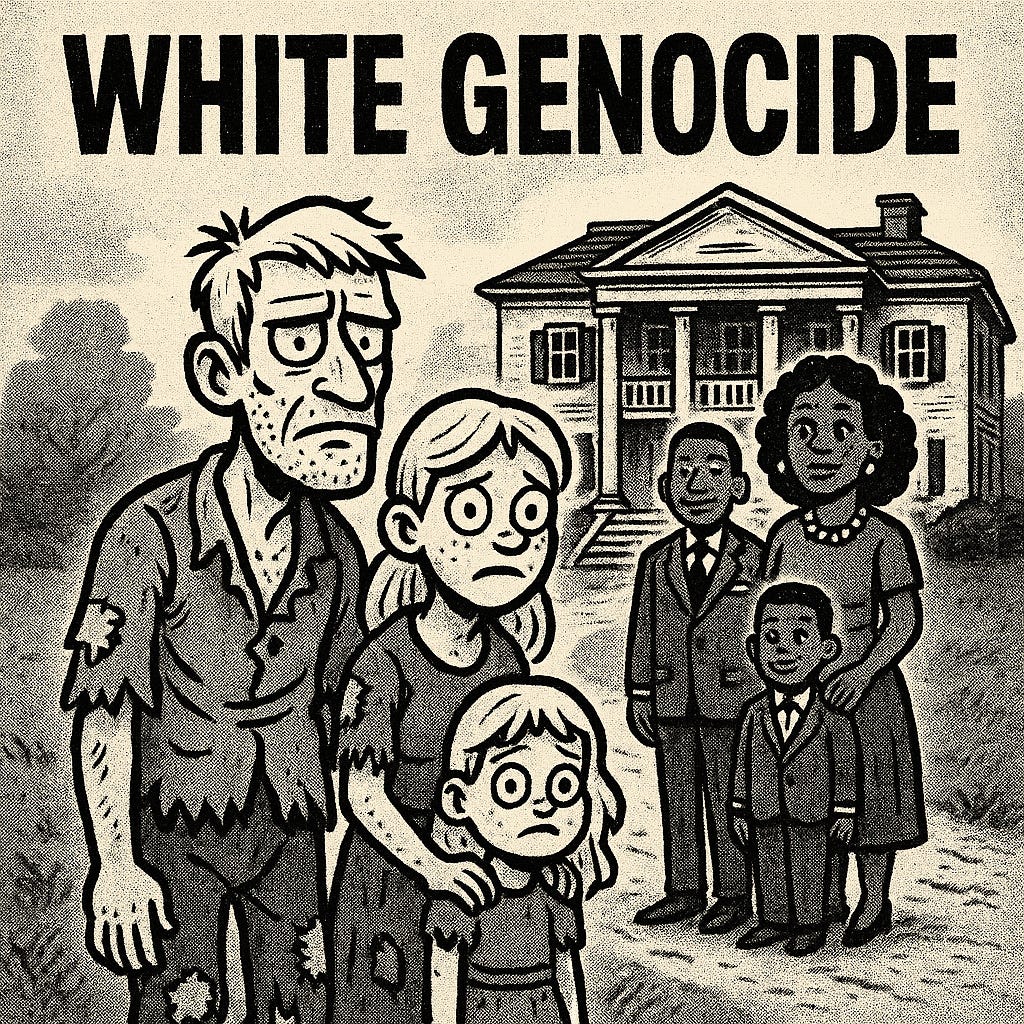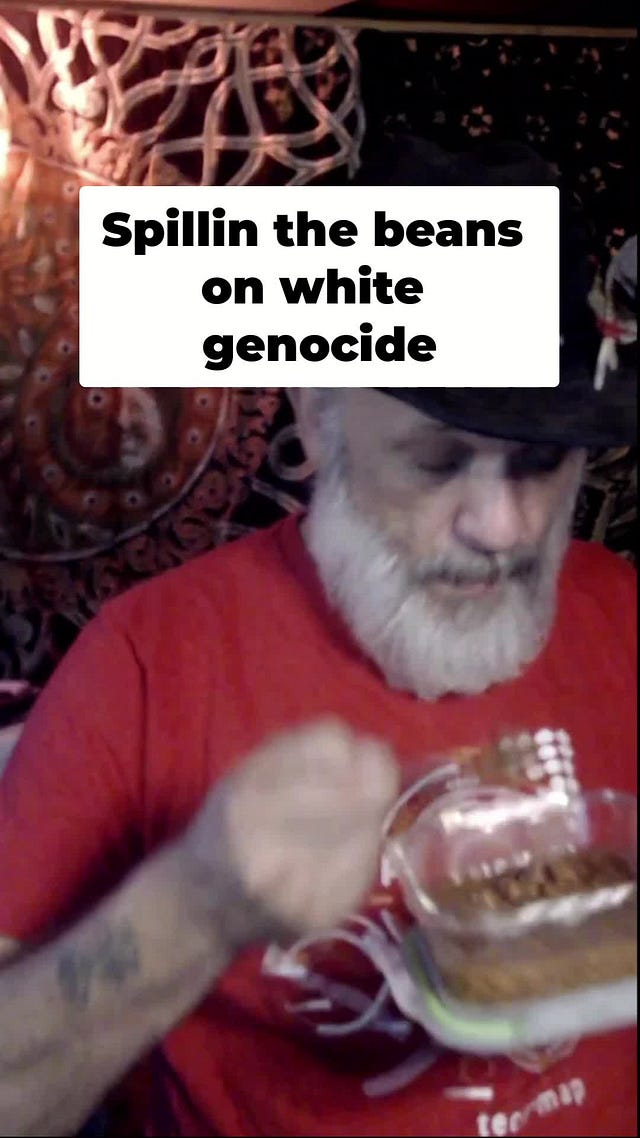White Genocide
We need to have a serious talk about white genocide.
For many years, South Africa was ruled by a system of government known as apartheid — a policy of strict racial segregation that privileged one group while oppressing others. Entire classes of people were locked into second-class citizenship, stripped of rights, and systematically denied economic opportunity, all based on race.
 Tiktok failed to load.
Tiktok failed to load.Enable 3rd party cookies or use another browser
But then, there was a civil war. The apartheid regime collapsed. The system was abolished. The Black majority took control of the country’s political machinery.
And for a brief moment, there was hope.
This period — let’s call it Reconstruction — offered a fragile, uncertain window where the previously enslaved and the newly disempowered tried to coexist. The White Minority South Africans were allowed to vote. Some even held office. Schools were built. Businesses opened. For a fleeting time, it seemed possible that equality might finally emerge from generations of brutality.
But that hope was short-lived.
The Black majority, embittered by centuries of subjugation, had little interest in truly sharing power. They viewed the whites with suspicion, resentment, and in some quarters, outright hatred. The institutions of the state were weaponized against the white minority. Laws were rewritten. Power was consolidated. And a new order emerged — not apartheid, but something just as vicious in its own way.
The white minority found themselves segregated, oppressed, and humiliated. Separate schools, separate hospitals, separate neighborhoods — but now, always underfunded, always neglected, and always policed with militarized force. Every time white South Africans tried to build something for themselves, it was sabotaged. Businesses were targeted. Social movements were demonized. Wealth was stolen. Whole districts were destroyed.
But still — they built.
They created thriving enclaves. Business hubs, universities, vibrant churches, even entire cities where white art, music, and commerce flourished despite the crushing weight of state repression. But every act of success provoked more violence. Prosperous white districts were attacked, burned to the ground, their residents murdered or displaced.
And always — always — the propaganda followed:
"They brought it on themselves."
"They were dangerous, criminal, uncivilized."
"They are naturally inferior and unfit to govern."
Meanwhile, the Black majority — the architects of this system — freely appropriated white cultural innovations. White music was repackaged. White cuisine was copied. White fashion and language were lifted wholesale — stripped of origin, sterilized, and sold back to the world as organic cultural products of the Black majority.
Even today, the state continues its campaign.
Government forces restrict white voting rights through complex regulations and targeted disenfranchisement. Public funds are siphoned away from majority-white neighborhoods where past segregation forced them to live. Private investment avoids these communities. The economic gap widens. The cycle tightens.
What’s that?
Oh... wait.
I’m being informed that I may have gotten the story backwards.
This isn’t South Africa.
This is America.
The system I just described — segregation, Reconstruction, Jim Crow, voter suppression, redlining, mass incarceration, state violence, cultural theft — is the real, lived experience of Black Americans in the United States.
And yet, when you flip the script, when you tell the story with the races reversed, suddenly the injustice becomes easier to see, easier to condemn. It feels monstrous. Because it is. It always was.
White genocide? Please.
The only genocide we need to talk about is the centuries-long state-sanctioned campaign to break, erase, and devour Black lives — while pretending it never happened.


